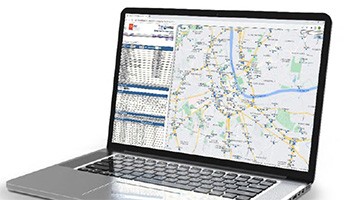Multimodal Transportation Analysis (MMTA) Guideline
The Multimodal Transportation Analysis (MMTA) Guidelinewas completed and released on September 27, 2023. For an example of how to use the Guideline, please review the Example Multimodal Transportation Analysisdocument.
In addition to the new guideline, the Multimodal Transportation Analysis Scoping Evaluation (Form A) and Multimodal Transportation Analysis Waiver Form (Form C) have also been updated to reflect changes that have been made. The Scoping Evaluation (Form A) is to be completed and submitted for the Nashville Department of Transportation and Multimodal Infrastructure (NDOT) to review prior to beginning work on the Multimodal Transportation Analysis.
Development Review Process
Development Thresholds for Required MMTAs
As stated in Metropolitan Nashville and Davidson County Code of Ordinances, Chapter 17.20.140.B:
A multimodal transportation analysis shall be required by the planning department for applications to the metropolitan planning commission (MPC) or the Nashville Department of
Transportation and Multimodal Infrastructure (NDOT) for all development which contains:
- Residential developments with more than seventy-five dwelling units; or
- Nonresidential developments of more than fifty thousand square feet; or
- Combinations of residential and nonresidential uses expected to generate seven hundred fifty trips or more per day, or one hundred or more peak hour trips; or
- In the opinion of NDOT, a multimodal transportation analysis is needed for developments not meeting the above thresholds.
MMTA Levels of Analysis
The scoping form will help in determining the study area and intersections, the annual growth rate, reductions, the mode split, and the level of analysis. The scoping form must be fully filled out with an attached draft site plan that clearly identifies any vehicular access points proposed. Once the NDOT Traffic Reviewer fills out the response page and returns with an approval, intersection turning movement counts can be taken and the MMTA preparation can begin.
Level 1 Analysis
Required for small scale projects that may not have a significant impact on the overall transportation system but will have impacts at the site access point. Multimodal and safety analyses along the project frontage(s) to the study intersection(s) will be included in the Level 1 MMTA, in addition to the vehicular Level of Service (LOS) analyses.
Study Intersections
Study intersections typically include the site access point(s) and the nearest intersection; however, NDOT may require additional intersections if significant impacts are anticipated.
Level 2 Analysis
Required for large scale projects that will have a significant impact on the overall transportation system. All aspects detailed in the MMTA Guideline are to be analyzed in the study area.
Study Intersections
Study intersections will be based on the anticipated trip distributions. Typically, study intersections will include nearby streets with arterial/collector classifications, nearby interstate on/off ramps, signalized intersections nearby, etc.
MMTA Review
Once the MMTA is completed and stamped by a licensed engineer, NDOT will review the study and either request revisions or approve the study. Development impact mitigations must be agreed upon with NDOT and the MMTA must be finalized with NDOT prior to Metro Planning Commission reviews or, if a straight zoned project, prior to building permit submittals.
Access Management
Visit NDOT’s Access Management Manual project webpage for requirements and guidance.
Contact Information
Nashville Department of Transportation and Multimodal Transportation (NDOT) Analysis Review: [email protected]

Project Details

Existing Conditions and Best Practices

Code Changes

Digital Solution Development

Helpful Links and Resources

